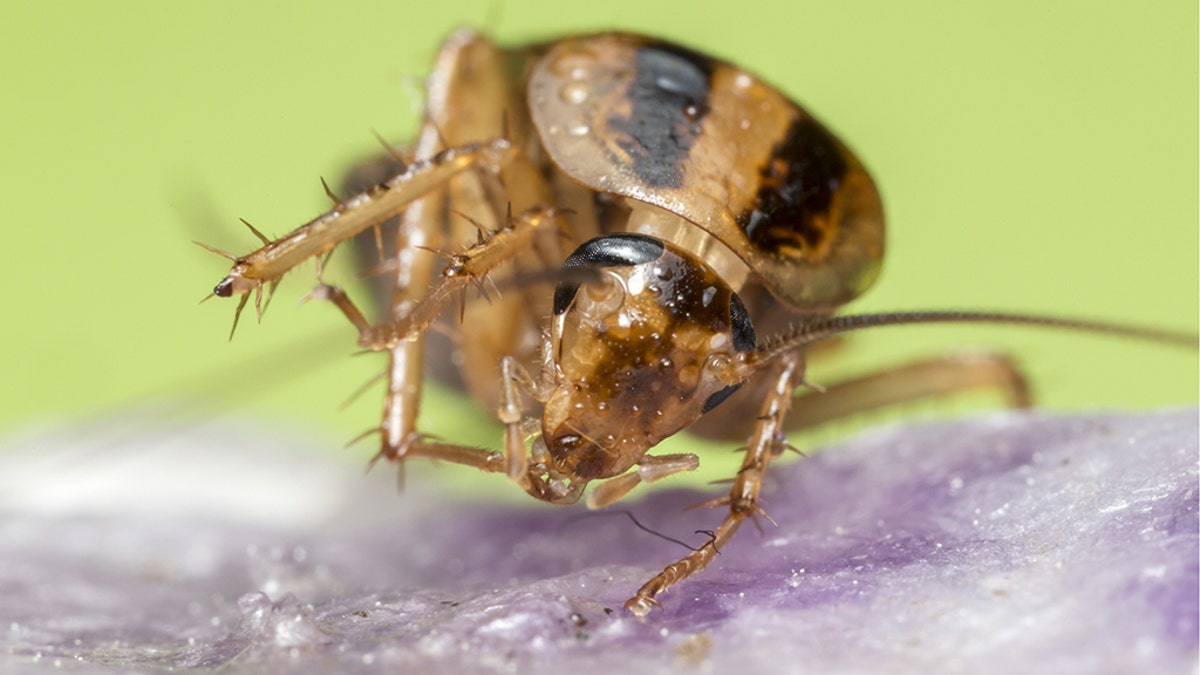
North Carolina State University researchers in a new study argue so-called "bug bombs" are not an effective way of ridding a home of cockroaches and could be putting human health at risk. (iStock)
After seeing a cockroach scurry across the floor or hiding on the inside of a cabinet door, it’s tempting to purchase total release foggers (TRF) — or “bug bombs” — in an attempt to get rid of the multi-legged insects. But the chemicals in these products may be doing more harm than good, especially when it comes to human health, according to a new study.
The study, conducted by researchers with North Carolina State University and recently published in the journal BMC Public Health, found bug bombs are an ineffective way of ridding your home of cockroaches and put humans and pets at risk of pesticide exposure. The researchers found “toxic residue” from these products is commonly found on countertops and floors, “areas cockroaches generally avoid but which are heavily used by humans and pets,” according to the university’s news release detailing the study.
BEDBUGS TAKE OVER TEXAS HOTEL BEDROOM IN SKIN-CRAWLING PHOTOS: 'THERE WAS BLOOD ON THE SHEETS'
“Baseline levels of insecticides in these homes makes sense because residents with moderate to severe cockroach infestations are likely to use insecticides to attempt to eliminate roaches,” Zachary DeVries, an NC State postdoctoral researcher and the lead author of the study, said in a statement.
“However, what was most disconcerting was that these swabs were collected from the middle of floors and kitchen surfaces, locations where roaches don’t generally congregate,” he explained.
To come to this conclusion, researchers tested four different foggers in 20 homes that were considered to be “cockroach infested.” They took wipe samples from various surfaces before the bug bombs were used, and then immediately after they were set off. They returned over the next few weeks to take more samples. The roach populations in the homes were also monitored during this time to “assess the efficacy of TRFs,” they wrote.
The researchers also tested only gel baits in 10 homes to compare the effectiveness of these products.
The conclusion? “TRFs failed to reduce cockroach populations, whereas similarly priced gel baits caused significant declines in the cockroach populations,” the researchers wrote, noting the bug bombs “resulted in significant pesticide deposits throughout the kitchen.”
Pesticide residue levels were also significantly higher than before the bug bombs were set off, according to the study, which noted average insecticide residues increased “600 times baseline levels” on kitchen surfaces, walls, floors and other areas just hours after the chemicals were released.
Meanwhile, gel baits were much more effective, and, by the time the study ended, had successfully killed off the roach populations in the 10 homes where they were tested. Why? According to the researchers, these products can more directly be used in places where these insects hide. The pesticides found in the foggers, comparatively, would build up in areas the roaches are less likely to travel.
"Bug bombs are not killing cockroaches; they’re putting pesticides in places where the cockroaches aren’t; they’re not putting pesticides in places where cockroaches are and they’re increasing pesticide levels in the home,” DeVries said. “In a cost-benefit analysis, you’re getting all costs and no benefits.”




















